Steeped in smuggling lore, Cornwall’s hidden coves and tucked-away villages made ideal hideouts for the thriving trade. Here, we take a trip back in time to when smuggling in Cornwall was rife…
Words by Elizabeth Dale
Smuggling in Cornwall
In Cornwall you are never more than a few miles from the sea, and never more than a craggy cove or two from a tale of a Cornish smuggler. The legends of these wily ‘free-traders’, as they were known locally, and their escapades seem to live in every quiet nook and coastal cranny of this almost entirely sea-bound county.
These days those hidden smugglers’ haunts are boltholes of a different kind and offer visitors the chance to immerse themselves in this exciting and emotive period of Cornish history.
Perhaps the most infamous village for smuggling Cornwall is the impossibly picturesque little port of Polperro. Here, ancient cottages crowd down to the calm waters of a narrow inlet where fishing boats bob and gulls call from lichen-dappled rooftops.
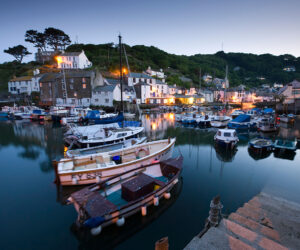
In the 18th century smuggling in Cornwall was a vital part of a vast underground economy that employed entire communities – men, women and children were, if not directly involved in bringing in the contraband, complicit in the storage, sale and distribution of the goods. Alongside fishing, farming and mining, smuggling was, for a while, one of the main occupations for folk in this wild part of the West Country. Polperro, which feels as if it has changed little in hundreds of years, brings that history to life.
Beyond its harbour walls is Willy Wilcox’s Cave, named after a smuggler who dug a tunnel into the cavern from the cottage above so that he could unload his contraband unseen.
Meanwhile a narrow, winding path along the coast leads you to the weather-worn, 16th-century Talland Church where the vicar, the Rev. Richard Dodge, is said to have helped his wayward parishioners land contraband on the beach below his church. Indeed, tales of clergymen, mayors and magistrates getting in on the act were not unusual.
It is perhaps not surprising, then, that England’s very first Preventive boat to combat smuggling was established in Polperro, in 1801. Today the village museum – the Polperro Heritage Museum of Smuggling and Fishing – is dedicated to the study of these clandestine activities and the local heroes involved.
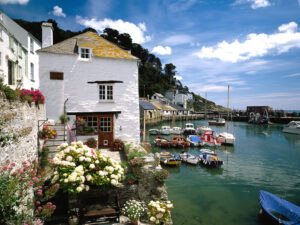
Most smugglers used ‘free trade’ as a way of supplementing their meagre, often insecure, income from fishing. The twin villages of Kingsand and Cawsand just west of Plymouth Sound were once as famous for unlawful smuggling in Cornwall as they were for lawful fishing. Some made a fortune from the trade; Zephaniah Job, a schoolmaster turned ‘smuggler’s banker’, was one such character.
Zephaniah opened his own bank in Polperro, loaning money to smugglers so that they could grow their ‘business’, and even printing his own bank notes. Job died a very wealthy man in 1822 and was buried at the isolated St Ildierna Church, near Lansallos Cove. His rather grand tomb stands just a few metres from the much simpler slate headstone of John Perry, another supposed smuggler, whose inscription simply reads “killed by a cannonball”.
From this graveyard you can follow an ancient cart track that twists its way downhill and emerges at a pretty little cove with white sand. Here a huge tunnel has been cut by hand directly through the rock face, reputedly to give smugglers better access to the beach.
Travelling further west towards Penzance brings us to the stunning promontory of Cudden Point on the edge of Mounts Bay, where the rare and beautiful Cornish chough can often be spotted gliding in the salt air. Close to this headland are three small inlets inextricably linked to smuggling – Pisky’s Cove, Bessie’s Cove and the best known, Prussia Cove.

With its crystal-clear water, this sheltered cleft in the rocky coast is now a popular spot for wild swimming, but it was here in the 18th century that John Carter, the ‘King of Prussia’ and his brother Harry ran their smuggling enterprise for some thirty years. Stories of the cat-and-mouse games that they played with the revenue men have become legendary.
Inveterate smugglers, with loyal crews and fast, heavily armed vessels, ruled the waters around Mounts Bay for decades, practically untouched by the authorities. Harry Carter even wrote an autobiography about his exploits, which includes an account of a particularly audacious incident on the Helford River.
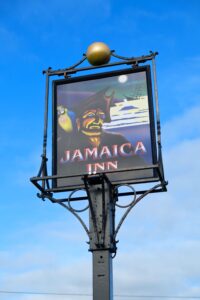
The Helford is Britain’s most southerly river, a place of breathtaking natural beauty loved by walkers, painters and novelists, such as Daphne du Maurier who based her pirate novel Frenchman’s Creek here. The area has a timeless quality and is one of the few places in England where ancient oak woodland meets the sea. Its tranquil, isolated creeks, now popular with kayakers and paddle-boarders, inevitably made the river a favourite haunt for free-traders.
Harry Carter’s wife, Elizabeth, was from Helford village, an idyllic tumble of small white-washed houses gathered at the water’s edge, and it is thought that an incident here in 1785 may have involved the infamous brothers. The newspapers of the time reported that “a large smuggling lugger mounted with 20 guns and commanded by a noted outlaw appeared off Helford”.
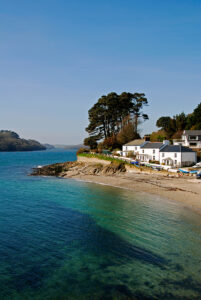
The ship was spotted by the Revenue men who, despite being outnumbered and outgunned, tried to prevent the smugglers from landing their goods. The officers were driven off, some “mortally wounded”, others forced to swim to shore. The article noted that this outlaw captain “visits where he pleases with impunity.”
These days you can ponder these unusual events while taking in the peaceful views from the Ferry Boat Inn on one side of the river or the ancient Shipwright Arms on the other. The little ferry that plies the water between the two is said to have been running for 1000 years.
Although the calmer waters of Cornwall’s southern shores were most suited for free-trading, north coast harbours such as St Ives, Newquay and Padstow, where dramatic coastal scenery is a given, also saw their fair share of clandestine activities.
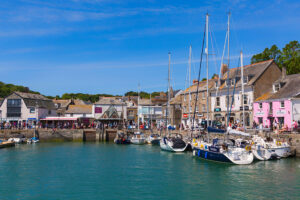
Standing on the bustling quayside in Padstow amid the ice cream parlours and art galleries it is hard to imagine a time when dark deeds were just part of life in this town.
But the attractive tangle of narrow alleyways around the harbour were once the territory of the pirate John Piers, hanged for his crimes in 1582, while the numerous sandy inlets within walking distance of the town made perfect places to unload contraband, if you could avoid the beady eyes of the officials. In November 1820 a crew of smugglers were discovered landing 500 tubs of spirits on a beach at Padstow. Unwilling to give up their booty they attacked the customs men and, adding insult to injury, made their escape in the Preventive boat.
Discovering Cornwall’s smuggling haunts takes the traveller to some of the most beautiful corners of the Cornish coast, while history gives names like Pepper Cove, Hell’s Mouth and Ralph’s Cupboard new meaning. Wander along any coastal path in the fading evening light and you can almost see the teams of donkeys, hooves wrapped in sacking to muffle their footsteps, laden with bags of tea coming the other way. Forget King Arthur – in Cornwall the real history is just as wonderful as myth and legend.
This is an extract, read the full feature in the July/August 2023 issue of BRITAIN, available to buy here from Friday 9 June.
Read more:

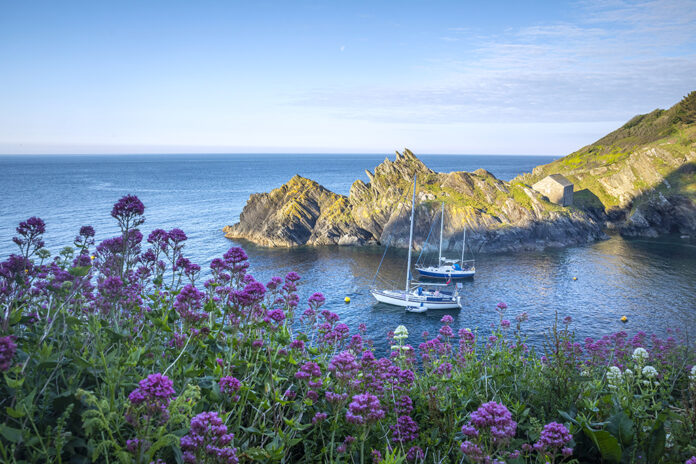




 © 2024
© 2024